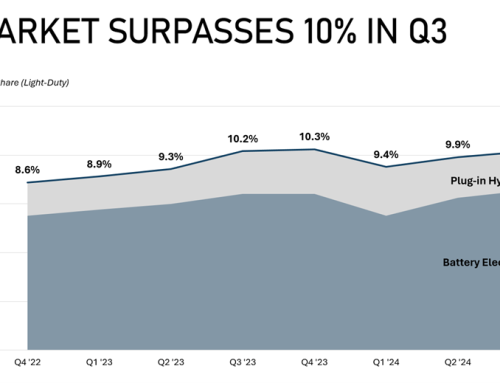
Source: EV Hub
Throughout the first quarter of 2020, the EV market reeled and raced to grapple with the challenges presented by the coronavirus pandemic. Widespread production shutdowns and collapsing vehicle demand sent the industry into a tailspin and only four out of 34 auto brands managed to improve on their first quarter sales numbers from 2019. The auto industry overall suffered a 12 percent decline in sales.
Even before chaos broke out in the final month of the first quarter, automakers opted to stop reporting total U.S. EV sales. This will change how we report on the EV market in our quarterly reviews moving forward and we will surface the highlights in the EV sector as they come while reporting the total quarterly sales for all auto brands. In both the United States and on a global level, EV sales appear to have held up better than conventional vehicle sales in some cases. Europe saw first quarter EV sales rise 87 percent compared to 2019 as the conventional market dropped by 26 percent. Tesla, one of the four brands including Lincoln, Ram, and Kia to emerge from the first quarter with more sales than the year prior, set a record for first quarter performance banking a 40 percent increase in global deliveries.
A relatively strong showing for the EV sector in the first quarter came as oil prices plummeted. The value of crude oil began to fall in March and even entered into negative territory after the close of the quarter in April. Analysts from Bloomberg New Energy Finance claim that cheap oil prices won’t dampen the drive towards electrification and factors like emissions regulations and vehicle incentives play a larger role in supporting the market. As Europe moves to strengthen emissions requirements, the United States is headed in the opposite direction. Following months of prolonged pushback and legal challenges from states like California that are likely to continue, the Trump administration finalized new rules rolling back light-duty vehicle fuel economy standards at the end of the quarter. The new rules reduce the required annual increase in standards from five to 1.5 percent.
States continue to chart their own course with EV policy development and investment in transportation electrification with top states like Washington and New York extending their EV leadership. Washington became the 14th state to join the ZEV Program in the first quarter, bringing the entire west coast into the program. On the East Coast, New York made their first VW settlement awards with $24 million committed to electric transit buses. Overall, $47 million out of the $70 million in VW awards made in the first quarter are going towards EVs and EV charging.
New York also led the quarter in terms of utility investment, accounting for two thirds of the roughly $60 million in country-wide approved investment courtesy of a DC fast charging program from Con Edison. Dominion Energy in Virginia also made good on their first wave of EV investments, receiving approval for a $20 million EV charging program focused on both private vehicles and fleet vehicles.
Virginia and New York also have their eyes set on medium- and heavy-duty electrification and other subsectors that contribute disproportionately to transportation emissions. Research published during the first quarter continues to highlight the heavy emission burden posed by trucks and ride-hail vehicles. As the coronavirus has generated increased media attention around the unintended air quality benefits of reduced travel , high polluting sectors of the transportation mix will continue to be a priority and receive increasing funding through state and utility grant programs. Join us for our quarterly review webinar for the first quarter at 3pm EST on June 3rd and stay tuned as we unpack the highlights from the second quarter and ongoing market turbulence brought on by COVID-19.


